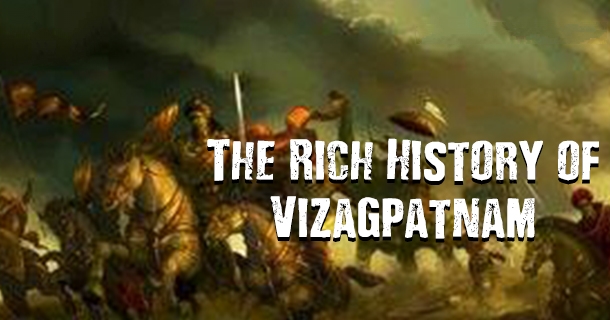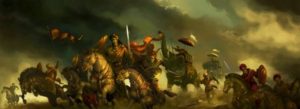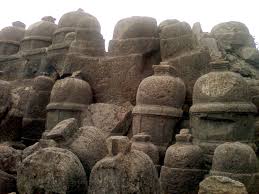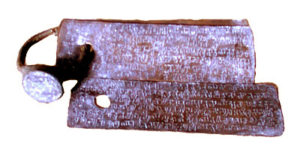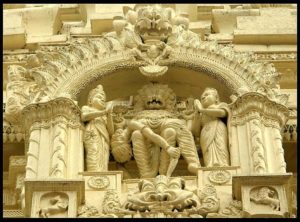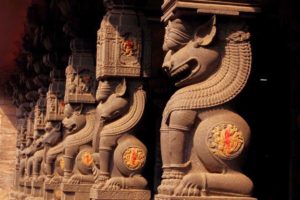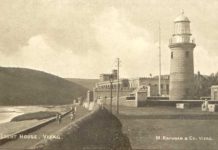Visakhapatnam, or Vizagpatnam as it was earlier called, is a city rich with history. It has been ruled by various rulers in the past, right from 500 BCE to the present day(when CBN is presiding over the chair). It wouldn’t be an overstatement to say the city has seen so much, that it does not care anymore. We feel it is not the right thing to do, and we should never forget our history. Thus, we present to you the rich history of Vizag, in two parts.
Note: The years mentioned in B. C. are in a decreasing order, because the birth of Christ is used as the measure. A. D. is Anno Domini, which is again in an increasing order.
1. 500 B. C. to 260 B. C.: Kalinga Empire
The region in and around present day Visakhapatnam was a part of the great Kalinga empire which stretched up to the river Godavari. This region finds mention in many Hindu and Buddhist texts of the 5th and 6th centuries BC. Sanskrit grammarians Panini and Katyayana (around 4th century BC) have also mentioned it. Kalinga Empire lost power when the mighty Maurya king Ashoka defeated the Kaling king in the famous Kalinga war.
An artist’s depiction of the Kalinga War.
2. 260 B.C. — 230 B.C.: Mauryan Empire
After defeating the Kalingas in 261 BC, Asoka annexed the kingdom. It is well-known that Ashoka was deeply affected by the killings and the suffering he saw in this war after which he embraced Buddhism and took the path of non-violence. More importantly, his political and domestic policies became less severe and more inclusive. Excavations of Buddhist monastaries of Bavikonda and Pavurallukonda (15 km and 25 km respectively from the city of Visakhapatnam) show that these were founded around 3rd century BC when Buddhism was gaining strength in India.
The stupas at Bavikonda, constructed around 3 BCE.
3. 230 B.C. — 220 A. D.: Under the Satavahanas
After the death of Ashoka, Satavahanas who were the feudatories to the Mauryans took over the southern region of the Mauryan Empire. Their empire was centered around Pratisthana (Paithan) in Maharashtra and Amaravathi in Andhra, it extended over much of the Deccan and Central India for about 450 years. Buddhism was fostered by the Satavahanas kings, Buddhist monastaries of Thotlakonda and Bavikonda near Visakhapatnam have yielded some Satavahanas coins.

Mahastupa at Thatlakonda.
4. 220 A. D. — 616 A. D.: Shifting Boundaries
After the Satavahanas decline, there is a long gap in the history of Vizag. Vizag was historically a part of the Kalinga but being a border area it was regularly annexed by either the state of Kalinga or the Andhra state, this makes it harder to find a connected account of its history till 616 AD when Pulakesin conquered Coastal Andhra. A gold coin belonging to Samudra Gupta of the Gupta dynasty (340 -375 AD) and a 5th-6th century AD terracotta sealing with a legend in Kalinga characters believed to the Rana Durjaya have been found in the Buddhist rock cut stupas of Lingalakonda. Rana Durjaya is believed to have been a vassal of Vishnukundina kings. The early Gangas of Kalinga were also active in the area.
Rock-cut stupas of Lingalakonda, near Visakhapatnam.
5. 616 — 1070: The Chalukyas of Vengi
Coastal Andhra was conquered by Pulakesin II , the king of Chalukyas of Badami in 616 AD, he appointed his brother Vishnuvardhana as viceroy of the region. In 624 AD, Vishnuvardhan I declared his independence after Pulakesin’s death by founding the Eastern Chalukya dynasty which extended as far as Cheepurupalli (100 kms north of Vizag). Buddhism was on decline as Chalukya kings were followers of Hinduism, they made Vengi (near Eluru) as their capital hence they are also known as Chalukyas from Vengi. There were constant conflicts between the Vengi kings and others. A couple of times the powerful Rastrakutas defeated them to whom they had to play a subordinate role. The Vengi kings conquered parts of Kalinga, where the Gangas of Kalinga became their allies. Around 1000 AD, the Cholas defeated the Vengi king, so Chalukyas had to become their subordinates. By 1070, the Gangas of Kalinga had taken over the Vizag region by defeating the Eastern Chalukyas and the Cholas.
Copper plates of Vishnuvardhan I of Timmapuram, near Vizag.
6. 1068: Simhachalam Temple
This Hindu temple is dedicated to one of the incarnations of Lord Vishnu called Narasimha. The original shape of the deity in the tribhanga posture has two hands with the head of a lion on a human torso. The architectural style of the temple is a blend of Oriya and Dravidian. It is the second richest temple in India after Tirupati. There is an inscription dated as far back as 1098 of the Chola King Kuloththunga. With more than 252 inscriptions in Oriya and Telugu describing the antecedents of the temple, it is a historically important monument.
7. 1070 — 1434: The Eastern Gangas
A dynasty originated with an early Ganga chief Rajaraja in 1070, who first helped the Eastern Chalukyas against the Cholas and then defeated both of them to start his dynasty which included Kalinga, parts of Andhra and Bengal. The Eastern Gangas reached their peak under his son Anantavarman Chodaganga, whose mother was a Chola princess. Anantavarman ruled for 72 years from 1078, was a strong Vaishnava who built the famous Puri temple and had to fight his uncle Kulōttunga Chōla, who conquered parts of Anantavarman’s empire including Vizagpattanam. The Eastern Chalukyas also invaded Vizag region after Anantavarman’s reign. King Narashima I built the Mukha mandapam and the Natya mandapam inside the Simhachalam temple. Inscriptions of various Ganga kings and of the Chola conquests can be found in the Simhachalam temple. The last Ganga king Bhanudeva IV was removed by his minister who started the Gajapati dynasty.


